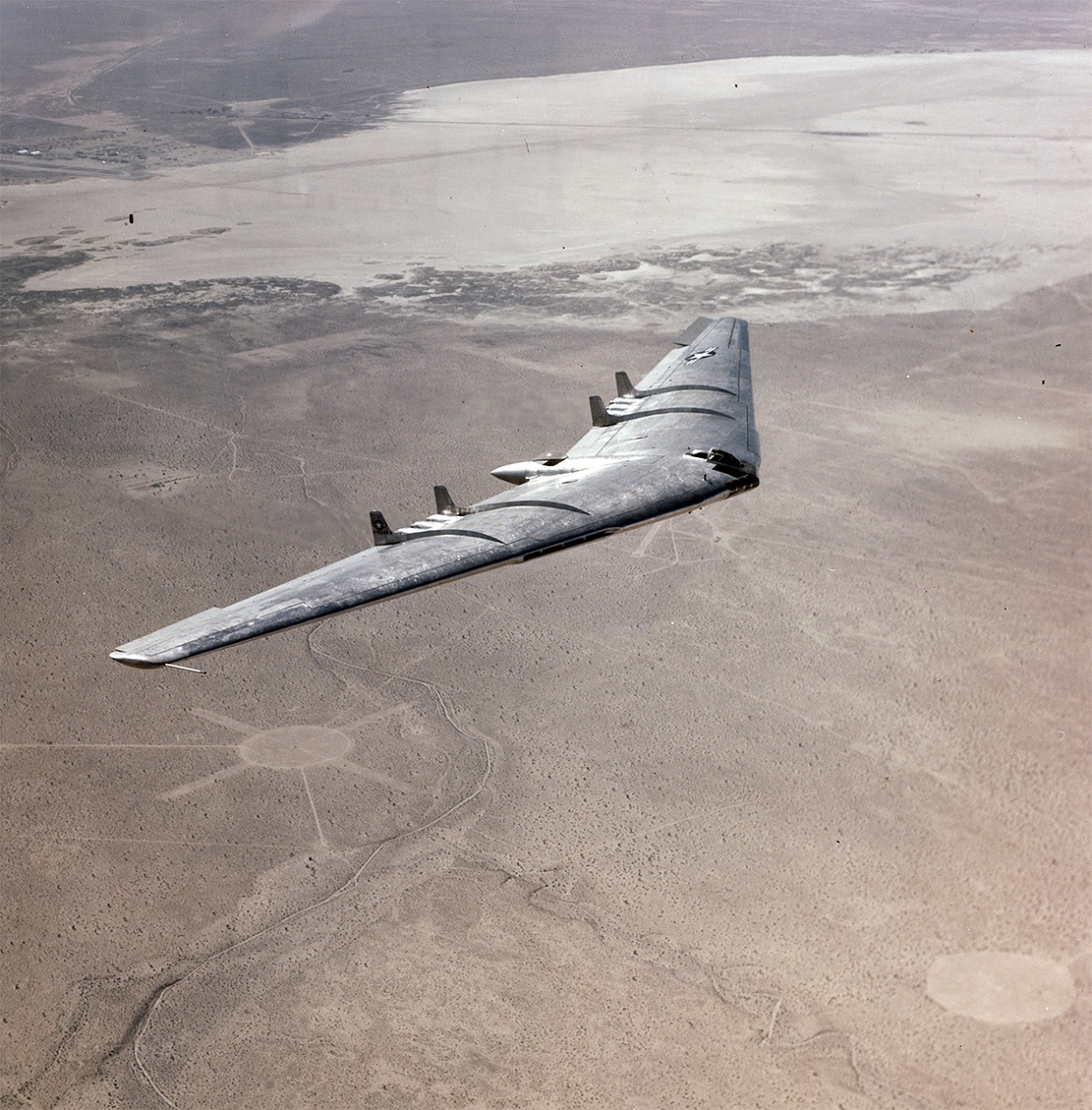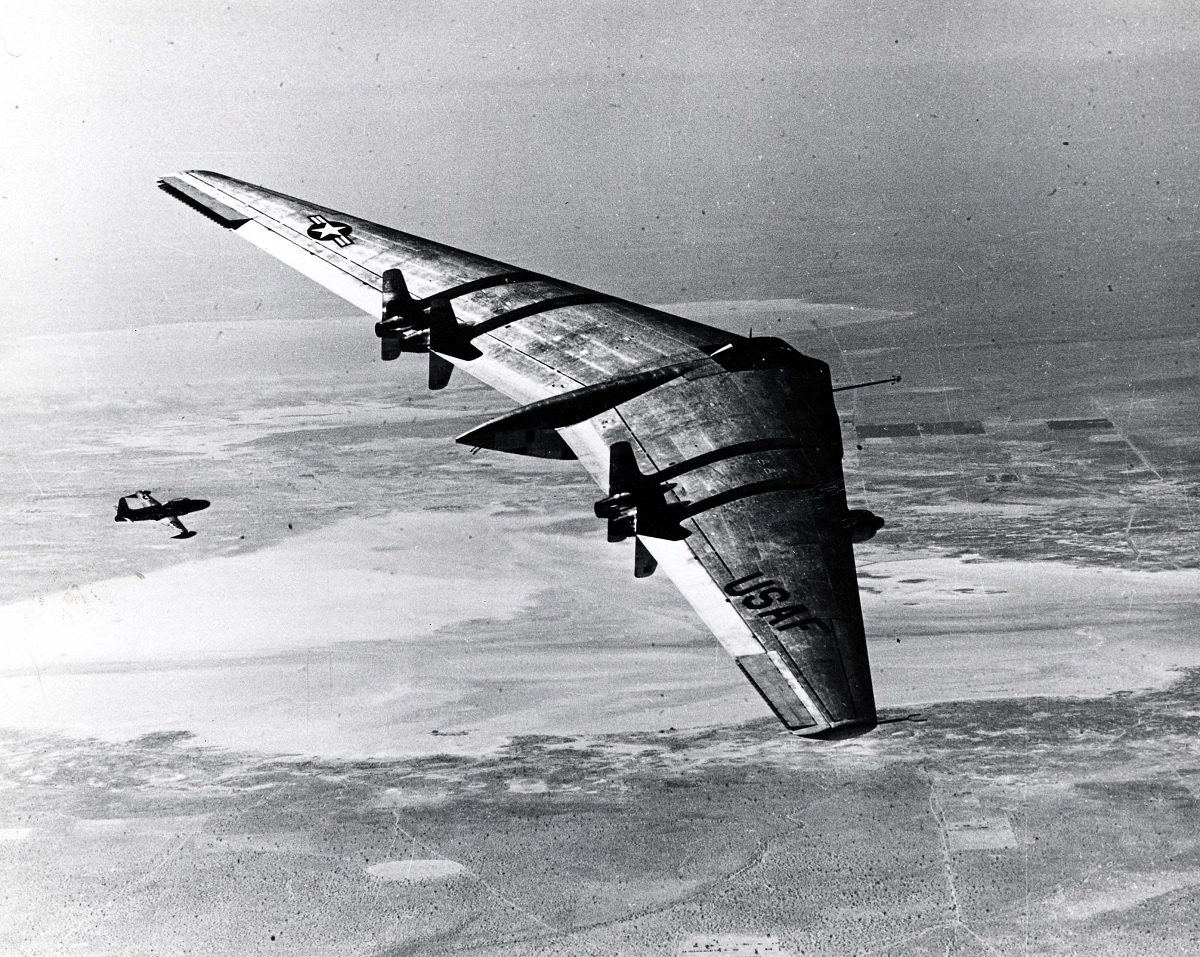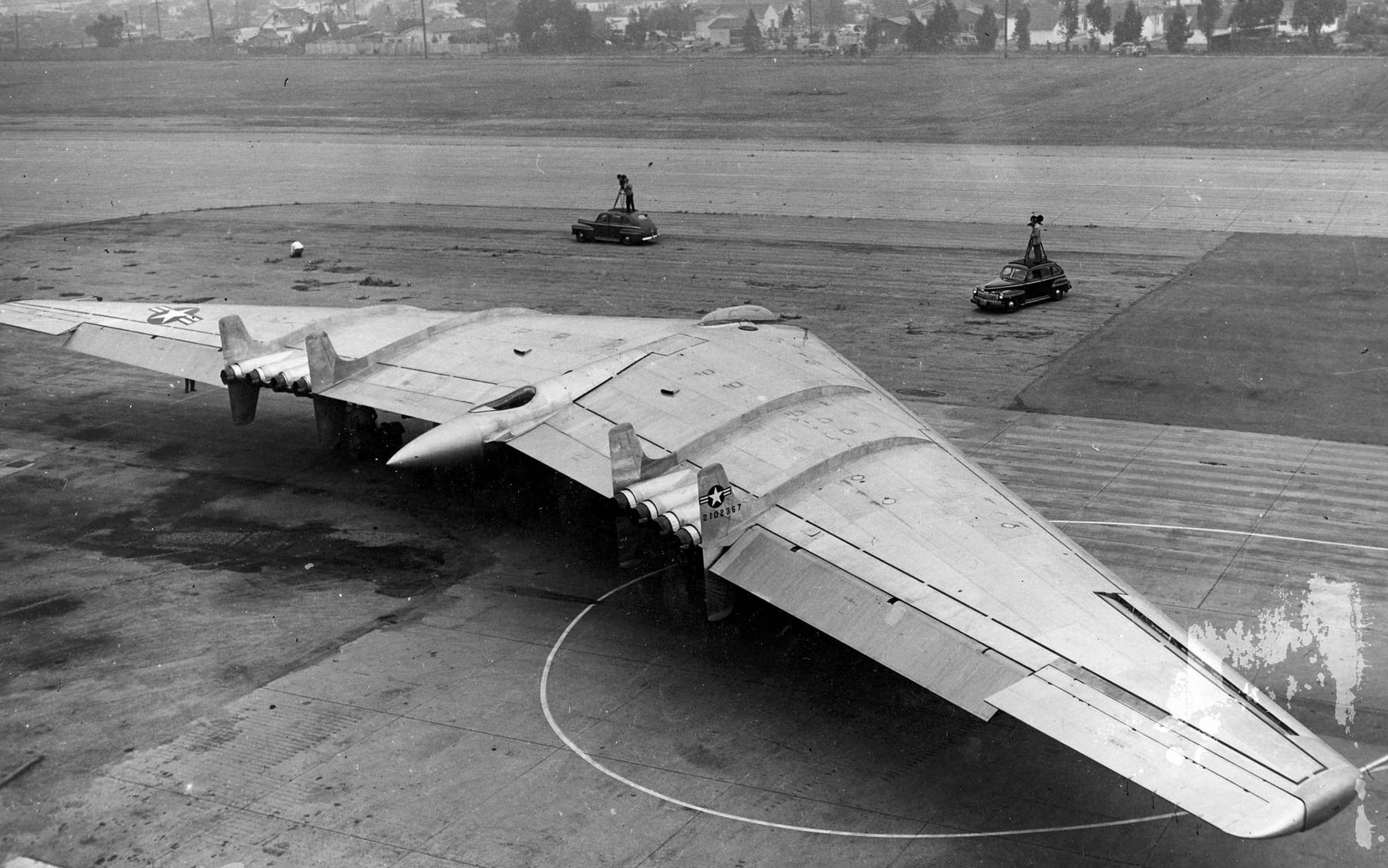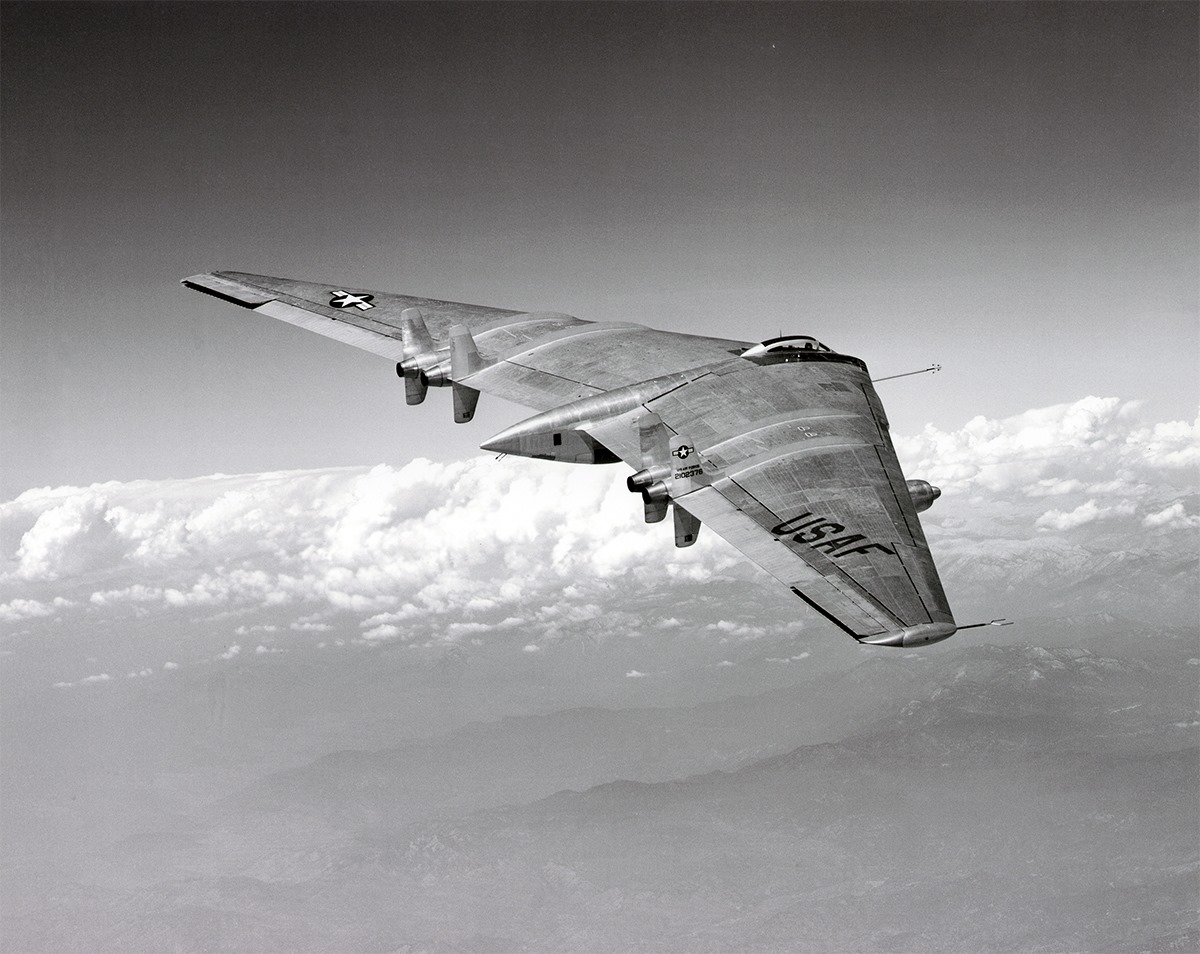The innovative and potentially very effective flying wing design, in which the tail section and fuselage are deleted and all payload is carried in a thick wing, was employed by the YB-35 and YB-49
The Northrop XB-35 and YB-35 were experimental aircraft created by the Northrop Corporation for the U.S. Army Air Forces (USAAF) during and immediately after World War II. They were designed by Jack Northrop as a huge wing-only, long-range heavy bomber. The flying wing design, which removes the tail and fuselage and carries all payload in a thick wing, is revolutionary and has the potential to be extremely efficient for this type of aircraft. Only prototype and pre-production aircraft were produced, but there was still enough demand for the design to be developed into a jet bomber under the name YB-49.
Eight Allison TG-180 (J35) turbojet engines were installed in two YB-35s in place of the four Pratt & Whitney R-4360 radial engines that were formerly powering its dual contra-rotating propellers. The USAAF gave its approval to the conversion program’s modification order in June 1945. Four new vertical stabilizers were also added, in addition to the installation of jet engines (two on each wing installed on both sides of the jet engine exhausts). To minimize airflow down the sweeping wing (lowering lift) rather than over the wing, four air dams were installed on the wings, extending forward from the vertical stabilizer.
The new aircraft was YB-49.

The first aircraft conversion project took over two years to complete, and the YB-49 No. 1 (S/N 42-102367) made its first flight on October 21, 1947, when it was ready for flight testing. The results of flight testing revealed generally good performance; nonetheless, the flying wing was doomed by stability during simulated bomb runs and political issues.
Testing with both aircraft continued until the second YB-49 crashed on June 5, 1948. The second aircraft was prepared for its first flight on January 13, 1948. When YB-49 No. 2 lost control and crashed about 10 miles northwest of Muroc Air Force Base (AFB), the aircraft was doing its 25th test flight. The aircraft experienced a catastrophic structural failure with the outer wing panels tearing off while being tested for stall recovery ability.
Maj. Daniel H. Forbes Jr., the pilot, Capt. Glen W. Edwards, the copilot, Lt. Edward L. Swindell, the flight engineer, Clare E. Lesser, and C.C. La Fountain made up the crew on the tragic mission.

Later, two Air Force facilities were given new names in remembrance of the pilots who died in the crash. Both Edwards AFB in California and Forbes AFB in Kansas bear the names of their respective recipients: Capt. Edwards and Maj. Forbes.

Following the second YB-49 prototype’s crash, the remaining aircraft underwent modifications to include more flight performance monitoring equipment before testing could restart. On March 15, 1950, a high-speed taxi run was being used by an Air Force crew to test the aircraft stabilizer reaction when the nose wheel started to violently wobble. The No. 1 YB-49 broke in two and was utterly destroyed as a result of the nose landing gear collapsing before the aircraft could be brought under control.
Northrop also created the YRB-49A, a reconnaissance variant of the YB-49, whose only prototype flew for the first time on May 4, 1950, from Hawthorne, California, to Edwards. After just 13 flights and over a year of testing, this aircraft’s testing came to an end.
The flying wing bomber concept was abandoned when the YRB-49A was destroyed in late 1953, and it would not be revived until the Northrop B-2 Spirit stealth bomber appeared nearly 40 years after the YB-49’s final flight.
Photo by Edwards History Office file photo / U.S. Air Force and Northrop Corporation via Wikipedia
Source: National Museum of the U.S. Air Force




